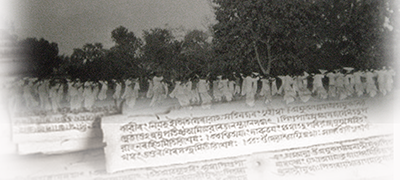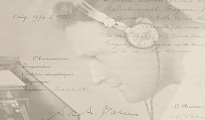Prisoners of WWI
In this chapter I am trying to listen to a puthi-path or ‘melodic reading’ recorded in 1918 in a German POW camp, by the Austrian linguist Wilhelm Doegen. The puthi was read by a prisoner from Mymensingh, his name was Keramat Ali and he was 21 years old. This chapter breaks up into little chapters which are all about learning to listen to the puthi, and later to another narrative song from the same region, the jari. Arnold Bake had recorded jarigan singers from Mymensingh at a festival in Birbhum in 1932. The sub-chapters below are written in an attempt to understand both the place of the phonograph in record-keeping and history-writing, the archival impulse and the archivist’s process, as well how we may listen to sound as history in our present time.
I have shared the POW recordings with sound recordist Ali Ahsan of Kushtia, who carries in him a long history of listening to such songs, and the songs of the bauls and fakirs too. There used to be puthi readings in his home in his childhood, his grandfather would teach him to listen. Hence the old archival recordings, though buried under surface noise, revealed meanings to him which I would not be able to understand on my own.
Haresuzzaman Hares of Kishoreganj, whose father Mohammed Saidur was a famous folk song and art collector, an dwho is also a collector with deep knowledge of place and sound, is someone I also asked about Keramat Ali’s puthi-path. We spoke, in Dhaka, and over the phone. He has promised to take me to listen to puthi and other narrative songs of his region.
We went to Helim Boyati of Rajibpur, Netrokona, to ask about jarigan and puthi-path. A living master of these forms, he talked about how things were in the past and how they are changing and sang and recited songs and stories for us. This was in 2019.



